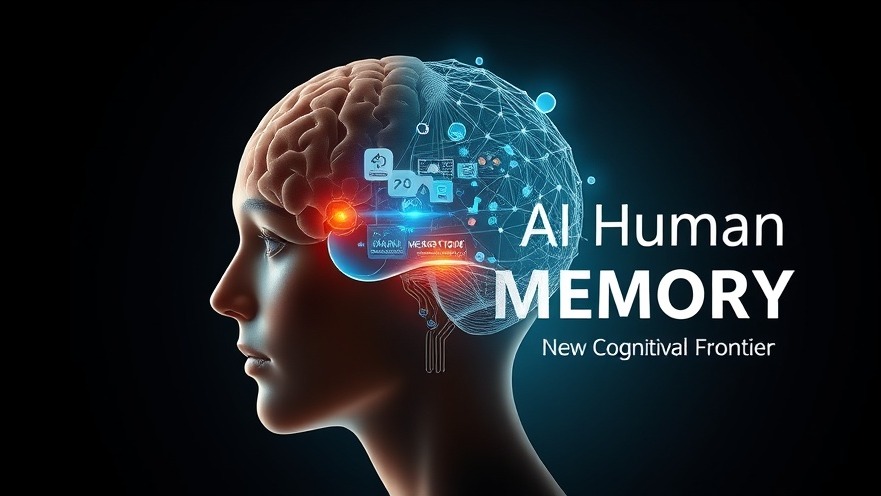
The Evolution of Cognitive Science: Where Do We Stand?
As we delve into the complexities of human cognition, it becomes apparent that our understanding of how we think, plan, and reason remains incomplete. Cognitive science has traditionally focused on reading and language, the crown jewels of human cognitive capacity. Yet, new technologies that allow for high-dimensional recordings directly from the human brain are reshaping this landscape. This technology pushes the boundaries of our knowledge, revealing that understanding neural coding is crucial to unraveling the intricate web of cognitive functions.
The Role of Artificial Intelligence in Memory Research
The integration of artificial intelligence (AI) into cognitive science is not just revolutionary; it is necessary. Current research indicates that AI can bridge gaps in our understanding of temporal context, a critical component of how memories are formed and maintained over time. For instance, large language models leverage temporal context to interpret and connect words within sentences and across paragraphs, much like the human brain processes language. This parallel offers us a unique avenue through which we can explore the mechanisms of thought generation and memory retention.
Understanding Long-Term Working Memory
Long-term working memory acts as a vital connector in our cognitive arsenal. It maintains sensory inputs over extended periods, facilitating cognitive processing that surpasses mere short-term recall. In a world where information is bombarding us continuously, the ability to hold onto foundational context is essential for effective decision-making and planning. What makes this even more intriguing is how neurological processes mirror those of AI models, suggesting that the brain's architecture might employ similar principles as contemporary neural networks.
Challenges in Mapping Human Thought
Despite the advancements, we still face substantial challenges in mapping how our brains create and sustain thoughts over time. Current scientific models focus predominantly on short-term neural responses, leaving a lack of understanding about how we encode and recall information that requires hours to process. By investigating these slow integrations of information, researchers hope to develop richer models that capture the essence of human thinking and reasoning.
Future Trends in Cognitive Research
The pathway ahead is bumpy but promising. As technologies continue to evolve, the fusion of cognitive science and AI will likely lead to breakthroughs that were once thought to be the realm of science fiction. For instance, enhanced brain-computer interfaces could one day allow for direct analysis of thoughts and feelings, fundamentally altering our approaches to mental healthcare and education.
Potential Applications Beyond Neuroscience
The excitement surrounding these advancements is more than theoretical; it encompasses practical implications in various fields, including education, mental health, and artificial intelligence-driven technologies. By understanding the principles governing human memory and thought, we can tailor educational approaches to enhance learning and retention more effectively. Additionally, breakthroughs in our grasp of cognitive functions could lead to improved interventions for mental health disorders, making therapy more grounded in neurobiological understanding.
Conversations Around Cognitive Diversity
A growing awareness of cognitive diversity highlights that each person's thinking and reasoning processes can vary significantly. This invites a larger conversation about inclusion in educational settings, workplace environments, and society as a whole. Understanding the multiplicity of cognition can foster empathy and adaptability, two qualities essential for collaboration in any field.
Final Thoughts: A Call for Further Research
As researchers venture further into untangling the threads of memory and cognition through AI and new technologies, a call to action emerges. It’s crucial for educational institutions, policymakers, and tech companies to support ongoing research and innovation in this area. The insights gained could not only enhance our understanding of the human brain but also serve as stepping stones for developing technologies that improve our cognitive abilities.
 Add Row
Add Row 

 Add
Add 


Write A Comment